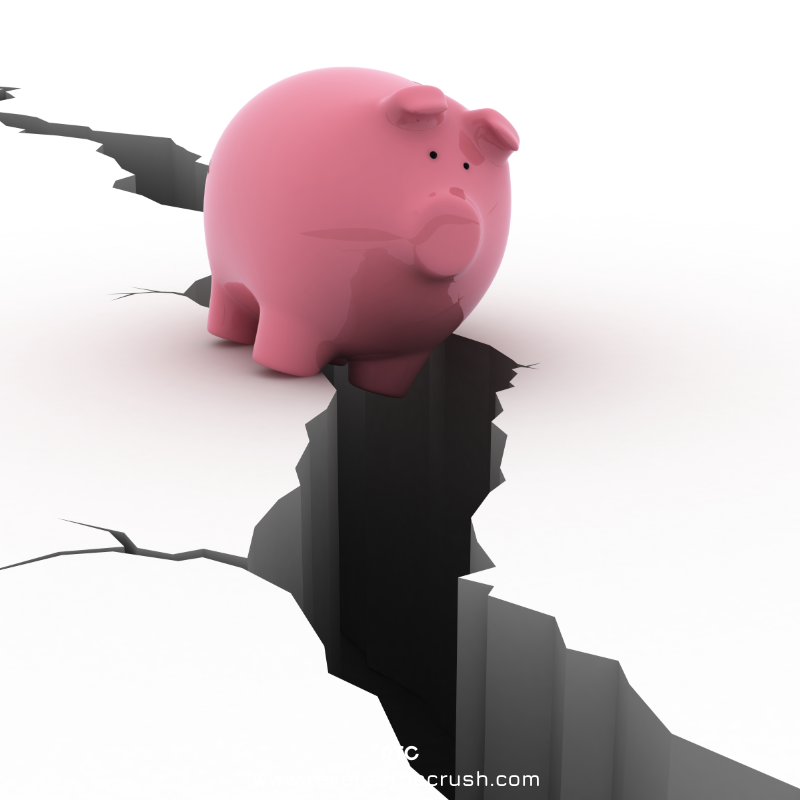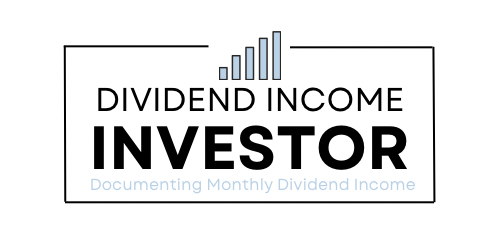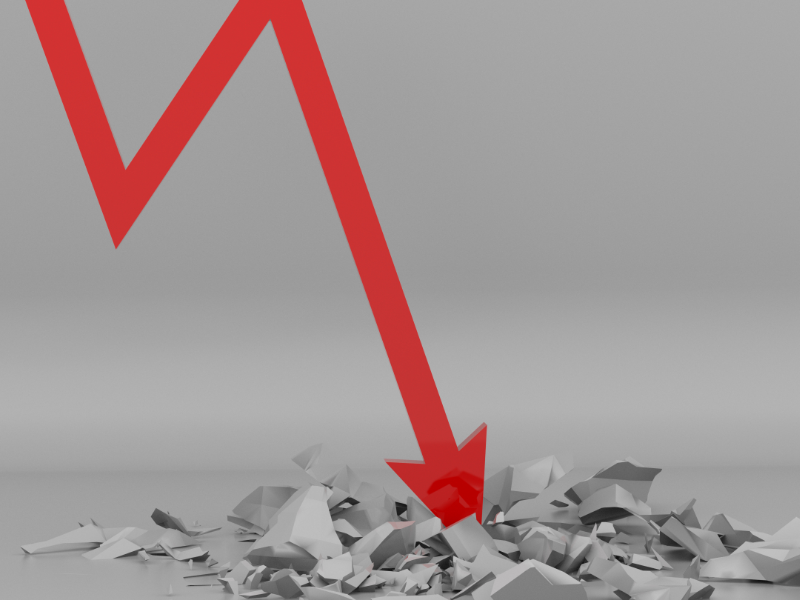Investing mistakes: Examining my worst investments/trades to avoid making the same mistakes and to see what lessons can be learned.
Even the best investors make investing mistakes.
Ideally, whether you’re a long-term investor or trader, seven out of ten investments will outperform. The other three may lag behind the market or underperform.
Fortunately, I’ve done quite well with many of my individual equity selections. But I’ve also made many investing mistakes over the last 10 years.
In this post, I will examine my worst investing mistakes ever so you don’t have to make the same mistakes I did.
Let’s get started.
Investing Mistakes: (7) Common Investment Mistakes to Avoid

1. Understand the Business: I sold Corning (Ticker: $GLW) too soon
Corning Incorporated is engaged in manufacturing glass and ceramics. More specifically, it produces display technologies for electronics.
I originally purchased approximately $2,000 worth of GLW shares in 2011 at $13.80 per share.
The thesis for the purchase was based on the premise that the company would profit off their cellphone display segment.
In addition, I made the purchase based 100% on the rules recommended by Ben Graham in The Intelligent Investor. I thought the company was grossly undervalued. In fact, I found it through a stock screener while searching for undervalued equities.
With that said, I ended up selling the stock at a loss (between $11 to $12 per share) in early 2012. I panic sold it because I didn’t know enough about the business.
Nowadays, Corning Incorporated (GLW) is trading at $35 per share (SMH). My evaluation was completely right, and the company has doubled its value while paying dividends along the way (SMH). 🤦♂️
Lesson: Make Sure You Understand The Business
2. Don’t Trade (Gamble): I Traded Before the Crude Oil Inventory Report
For the readers that don’t know, I took a mini-retirement to focus on trading and blogging in 2016.
During my time as a day-trader from March 2016 to July 2016, I had a few impressive trades and was profitable on over 60% of my trades.
But I also made some major investing mistakes. Fortunately, none of them were life-altering, because I used stop limits and proportionate amounts of money to trade with.
Even still, the mistakes were painful.
My worst trading mistake ever occurred on Wednesday April 27, 2016. As I wrote in my post covering it
“On Wednesday, I got smoked out of the market with my worst trade to date.”
You can read the entire post with more trade details here: Trade Notes: Results After 55 & Revisions for May.
Anyways, I successfully made a similar trade the prior Wednesday. My plan was to attempt to predict the direction of crude oil before the inventory report was released.
But I shouldn’t have assumed it would work out the same again. I never should have speculated.
Here’s how the trade went down:
I bought 200 shares of UWTI at $29.98 for $6,006.03 in anticipation that the inventory report would push oil higher for the day.
Unfortunately, I was wrong, as the price of oil dropped sharply. In fact, it dropped right through my stop limit so fast it didn’t sell. Based on my strategy at the time, I got out immediately at the best available price. I sold 200 shares of UWTI at $28.06 giving me a final amount of $5,612.02. I lost $394.01 in a matter of minutes (SMH). 🤦♂️
Lesson: Don’t Trade (Gamble)
3. Never Sell A Great Business: I Sold Apple (AAPL) Shares Two Splits ago
I’m going to be honest with you – this one stings.
I originally purchased Apple shares in 2011 around $375 per share, two splits ago.
The stock continued to rise up to $700 before coming back down for a while. I sold some shares at around $680 for an 80% return.
Before the first split, the shares bounced around from approximately $418 to $460 for a while. I bought a couple more times at $420 and $428—I later sold the shares at around $456 and $460 for decent profits again.
Soon after I sold my Apple position, the shares jumped to nearly $800 before the company announced a dividend payment and 7 for 1 stock split. After the first stock split, the shares were prices around $90 to $100 per share. From there, shares of AAPL climbed back to $500 before splitting again in 2020.
Altogether, the $2,500 I invested would have been worth approximately $17,500 excluding dividends. Instead of a 7-bagger, I ended up with a measly eighty percent return.
Nevertheless, I learned to never trade a fantastic business. I will never sell an AAPL share again (SMH). 🤦♂️
Lesson: Never sell high quality stocks, hold them forever.
4. Take Advantage of Stock-Sharing Plans and Company Matches (free money)
I worked for two Canadian banks prior to my current job.
Regrettably, I waited nearly two years before I participated in RBC Royal Bank’s stock-sharing plan. I missed out on thousands of dollars.
By not participating, I missed out on free money (SMH). The company matched 50% of your contribution up to 6% of your salary. Based on my salary at the time, I missed out on over $4,600 over a 4 year period.
In short, not enrolling into employer share plans can cause you to miss out on thousands of dollars (SMH) 🤦♂️.
Lesson: If your employer offers a match, take it
5. Be Patient: I sold Shoppers Drug Mart before Loblaws Purchased
After completing a detailed analysis of Shoppers Drug Mart, I invested $2,500 at $41 per share (not exact numbers). After becoming worried that larger competitors, such as Walmart and Amazon, would eat into their business, I sold around the middle of 2013.
Though I sold for roughly $44 per share, which earned me a small profit, an announcement was made within a short period of time stating: Lobalws was acquiring Shoppers Drug Mart for 12.4 billion (SMH!).
The following is a quote from the above linked article:
“Shoppers shareholders will be able to choose either $61.54 in cash or 1.29417 Loblaw shares, plus one cent in cash for each Shoppers Drug Mart share held, on a pro rationed basis.”
$61.54 per share!—(SMH!) 🤦♂️
Lesson: Be patient and trust your research
6. Don’t Chase High Yield: Sir Royalty Income Fund Cut its Dividend
As a dividend income investor, I buy stocks that pay dividends to build a cash flow machine.
However, I’ve learned that chasing the highest yield available is not the best option. Based on my experience, it’s better to focus on quality dividend growth stocks as opposed to chasing the highest yields.
Unfortunately, I learned this lesson more recently with Sir Royalty Income Fund (SRV.UN), a real estate investment trust I formerly owned.
Because of the shutdown, the company was forced to cut its dividend. The stock has plunged since.
I should have known, though. Even prior to the shutdown, the company’s dividend payout ratio was too high. The proof is that they slashed their dividend even before the pandemic started.
I mean, the 8% dividend yield that was paid monthly was nice for a while. But chasing this high yield ended up burning my portfolio later.
Simply put, they were paying out too much of their earnings.
Lesson: Don’t Chase High Dividend Yields
7. Manage Risk and Speculate with 10% or Less of Your Portfolio’s Value: I Bought Cannabis Stocks At High Valuations
To put it bluntly, I got caught up in the hype of cannabis stocks in the early days of Canadian legalization.
I purchased three cannabis stocks that I still own in 2020.
Unfortunately, though, the hype had already been priced into cannabis stocks by the time I purchased.
They were all grossly overvalued based on analysts overestimating Canadian demand.
As a result, the cannabis sector collapsed and share prices have never really recovered. We’re all still waiting for the European growth, or for the United States to legalize it.
Anyways, Aurora Cannabis (ACB) is now one of my worst investments of all time. My initial investment is basically non-existent now.
Fortunately, I created my own set of rules for investing in the cannabis industry. Mainly, I used less than 10% of my portfolio’s value to speculate with. In fact, I used less than 2% for this position.
Although the value of my Aurora Cannabis shares collapsed, I didn’t lose a lot of money because I didn’t invest a lot of money.
Lesson: Manage risk and speculate with 10% or less.

Investing Mistakes – Concluding Thoughts (Errors of Omission)
In addition to the 7 investing mistakes mentioned in this post, the only other mistakes are errors of omission.
There are stocks I should’ve bought, and stocks I should’ve trusted my analysis on. But for whatever reason, I either purchased another equity or missed the opportunity altogether.
But in the end, all we can really do is learn from our mistakes and learn from the mistakes of others.
In conclusion, investing mistakes help you become a better investor in the long run. It’s important to reflect, examine and assess your own performance.
To recap the lessons I’ve learned from my own investing mistakes:
- Understand the business.
- Don’t Trade (it’s gambling).
- Hold great stocks forever.
- Take advantage of company stock-sharing plans.
- Be patient and trust your research.
- Don’t chase high dividend yields.
- Manage risk and speculate with 10% or less of your portfolio’s value.
Related
Apple (AAPL) – The Next Great Dividend Growth Stock Story – Is AAPL a Buy?
Dividend Payout Ratio – Dividend Investors Should Seek Healthy Ratios Over High Ratios
Investing in the Cannabis Industry – Four Tips to Protect Wealth
Oil Prices Leads to Disaster – The Day I Paid Trader Tuition
I am not a licensed investment or tax adviser. All opinions are my own. This post may contain advertisements by Monumetric. This post may also contain internal links, affiliate links to BizBudding, Amazon, Bluehost, and Questrade, links to trusted external sites, and links to RTC social media accounts.
Connect with RTC
Twitter: @Reversethecrush
Pinterest: @reversethecrushblog
Instagram: @reversethecrush_
Facebook: @reversethecrushblog
Email: graham@reversethecrush.com


 Saving vs Debt Payoff: Should You Save Money or Pay Off Debt?
Saving vs Debt Payoff: Should You Save Money or Pay Off Debt?
